Author: admin
A prototype for a Responsive Fisheries Management System (RFMS) was developed in the context of the European FP7 project EcoFishMan and tested on the Portuguese crustacean trawl fishery. Building on Results Based Management principles, RFMS involves the definition of specific and measurable objectives for a fishery by the relevant authorities but allows resource users the freedom to find ways to achieve the objectives and to provide adequate documentation. Taking into account the main goals of the new Common Fisheries Policy, such as sustainable utilization of the resources, end of discards and unwanted catches, a management plan for the Portuguese crustacean trawl fishery was developed in cooperation with the fishing industry, following the process and design laid out in the RFMS concept. The plan considers biological, social and economic goals and assigns a responsibility for increased data collection to the resource users. The performance of the plan with regard to selected indicators was evaluated through simulations. In this paper the process towards a RFMS is described and the lessons learned from the interaction with stakeholders in the development of an alternative management plan are discussed.
The reformed Common Fisheries Policy (CFP), adopted by the European Union in 2013, aims to achieve sustainable exploitation of marine resources. Beyond the mainstream of stakeholders' engagement, the literature increasingly calls for shared accountability in fisheries management. In such scenarios, identifying stakeholders' insights becomes critical for a successful design of innovative management approaches. This paper analyzes how the stakeholders perceive a results-based management system for four fisheries in different European sea-basins as well as at a pan-European level. The results indicate a need for adaptive spirit participatory management approaches, building on regional adaptations within transparent and plural frameworks for fisheries. To succeed, the system should explicitly address its associated public and private costs; neither participation nor accountability comes for free.
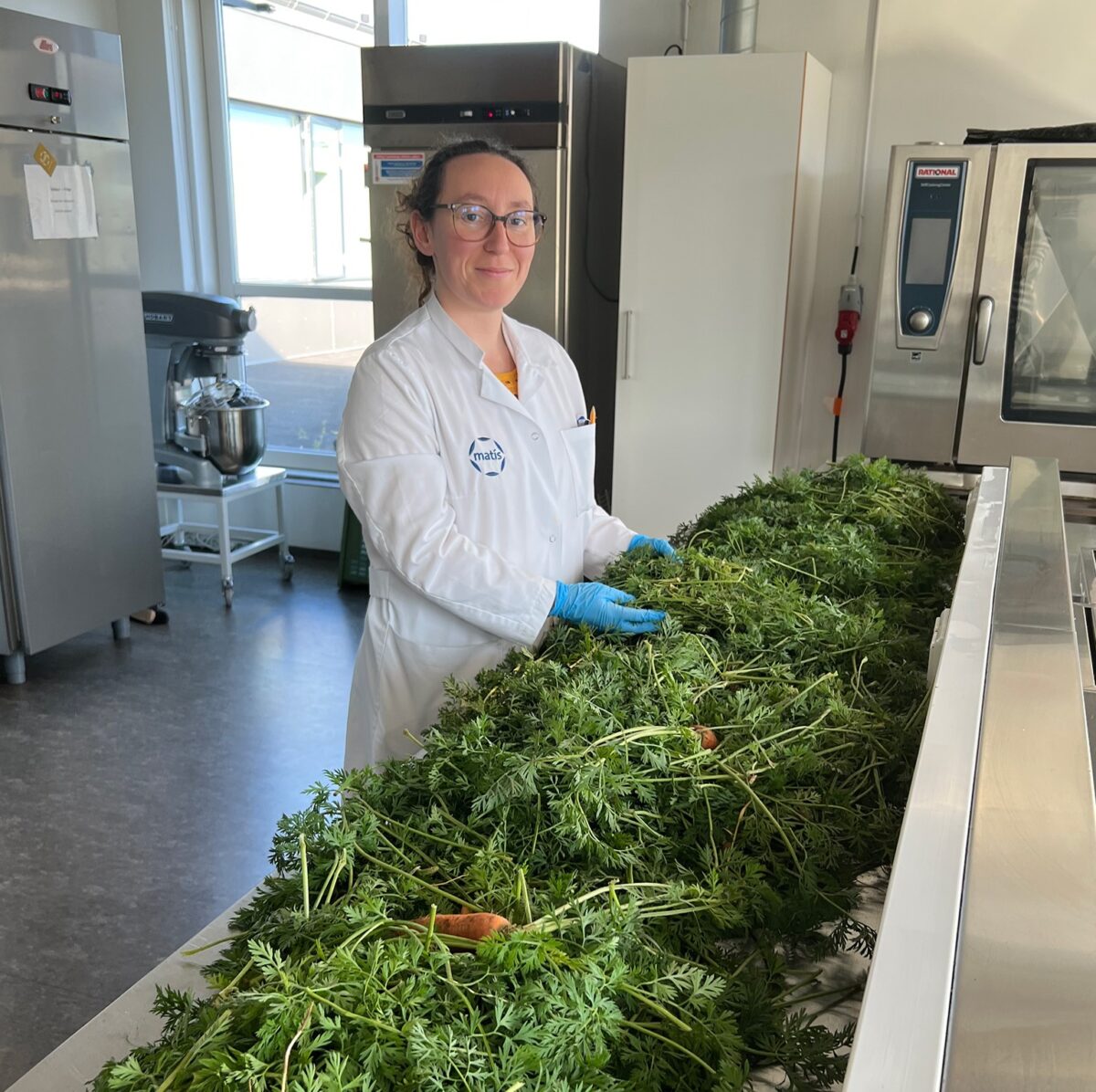
Horticultural farms produce a huge amount of by-products that can be used in a variety of productions. Leaves can be used in spice mixes and fiber can be extracted from them to be added to foods. Antioxidant activity was measured in various by-products and it was found that rose cuttings can be used in cosmetics such as facial creams. This is stated in the recently published final report of the project Valorisation of side streams from Icelandic horticulture which Matís led and finished at the end of 2023. The project was carried out in collaboration with the Farmers' Association of Iceland and Orkídea with a grant from the Food Fund.
The aim of the project was to explore the possibility of using diverse by-products from gardening as ingredients for food, nutritional supplements or cosmetics. The side products under investigation were cucumber and tomato leaves, leaves of outdoor cauliflower and broccoli as well as leaves and stems from floriculture. It was also examined whether the use of second-class carrots and potatoes could be improved. All this was studied with a view to increasing the value of vegetable production, improving utilization and increasing sustainability.
Nutritious leaves and low heavy metal concentration
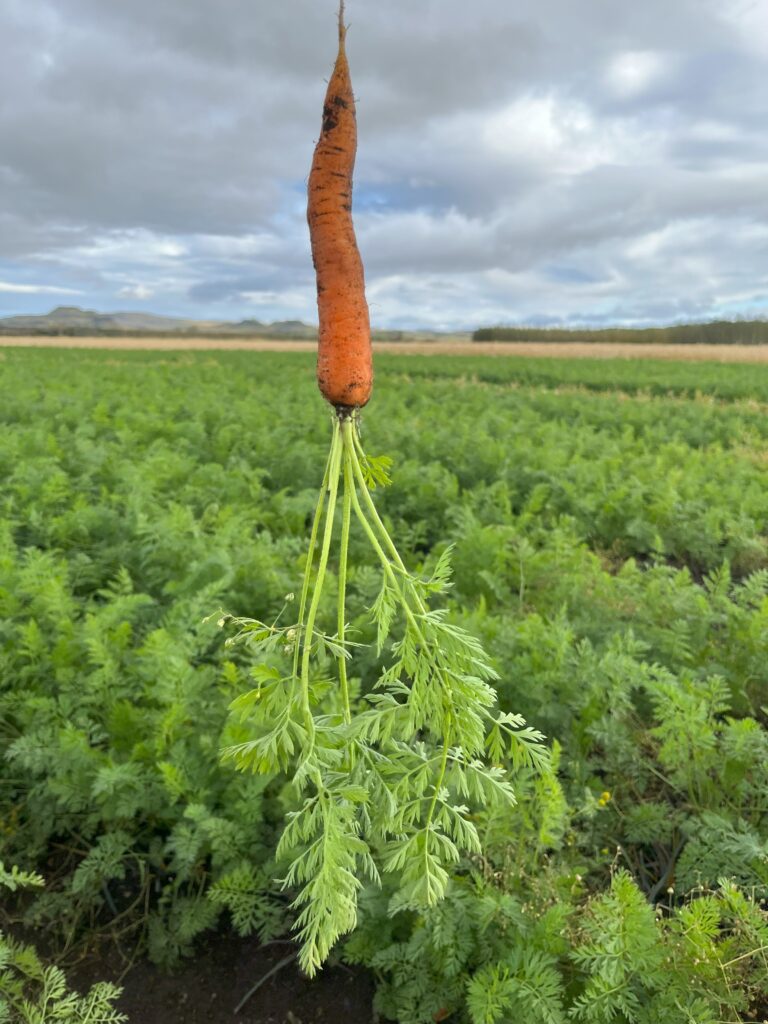
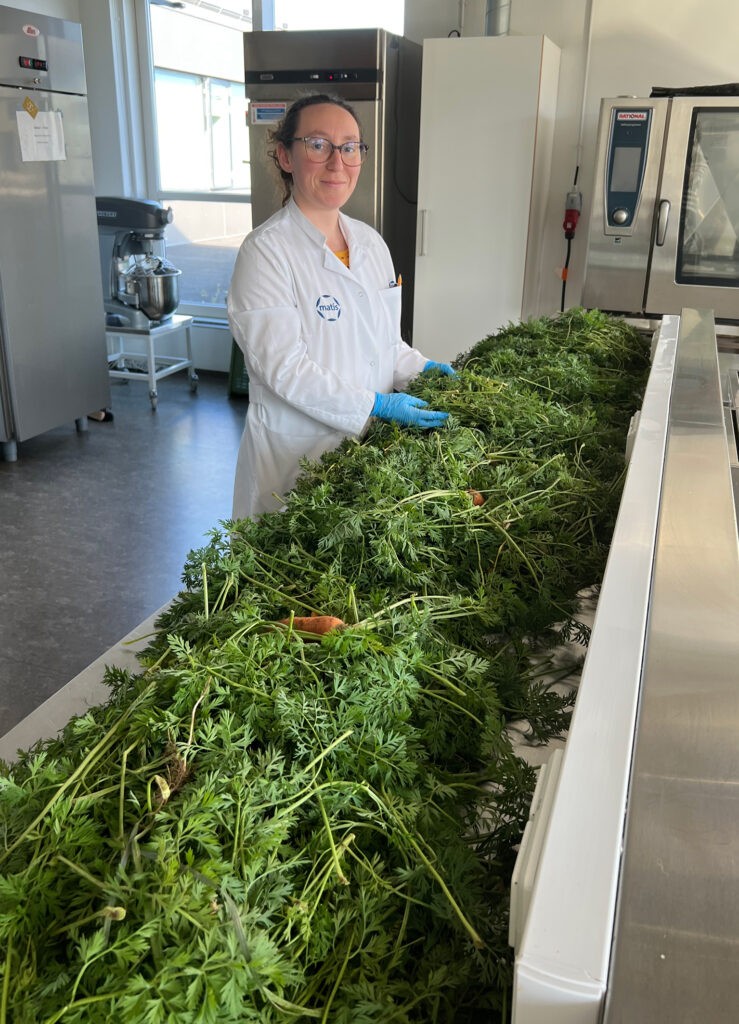
It was surprising how much various nutrients were measured in the side products. Significant amounts of fiber were measured in leaves, stems and carrot grass. The diet of Icelanders often contains too little fiber, but it would be possible to use these substances to improve it. The by-products were generally found to be rich in minerals, particularly potassium, phosphorus, magnesium, calcium and iron. Heavy metals were not measurable or their concentrations were extremely low. These results encourage the utilization of by-products in food. When using new products for food, however, food safety must always be considered, as some plants contain unwanted natural substances to protect the plant. When plant parts have not previously been used for human consumption, it is necessary to check which rules apply to food.
Premium raw materials with the right processing methods
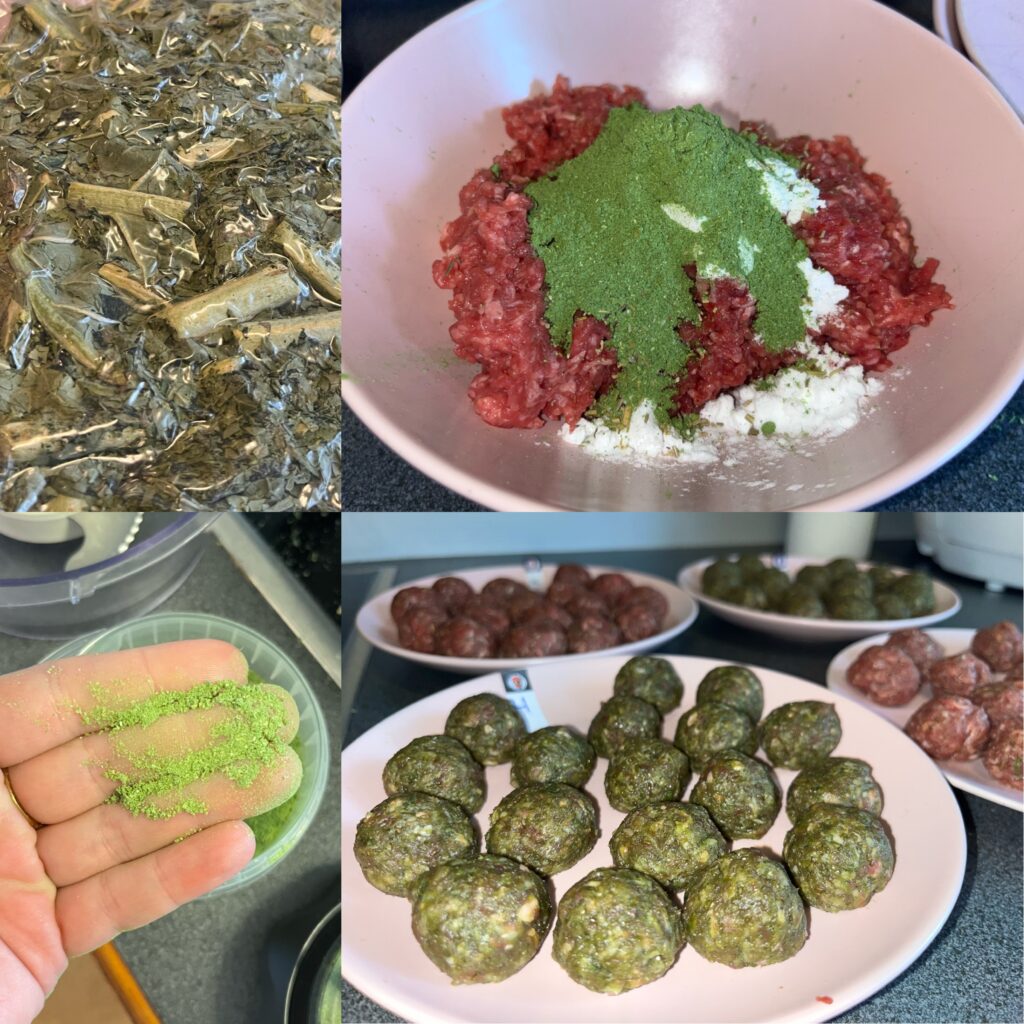
In the project, freeze drying was used to pre-process the raw material for various product development. For example, a special spice mix containing freeze-dried leaves of cauliflower and broccoli was created for meatballs to improve both the taste and wholesomeness of minced meat. The product concept is that the consumer only needs to mix one portion of spice mixture against 600 grams of raw mince and one egg, then it is possible to form buns and fry. This is a simple, nutritious and tasty dish with very little effort.
Deep-fried carrot strips could be a premium product to top off fancy dishes, as a snack or side dish. In the project, experiments were carried out with this processing method, and lightly salted, deep-fried beet strips turned out to be the most delicious. The taste was roasted/roasted, slightly bitter and reminiscent of coffee bean notes. The texture was crispy and the taste extremely delicious. Comparable products on the market are, for example, fried onions and potato straws (pik-nik).
Rose petals and branches with unexpected functions
Exciting opportunities lie in the use of rose petals and rose branches in skin care products, as the antioxidant activity is high in these side products of gardening that are usually thrown away. Rose leaves and branches had the highest antioxidant activity compared to leaves of cauliflower, broccoli, tomato and cucumber. It is therefore an extremely interesting future project to create skin care products with this ingredient and to better measure the effectiveness and conduct consumer tests.

A report on the results of the study can be accessed in its entirety on Matís' website here: Valorisation of side streams from Icelandic horticulture

Since 2005, the North Atlantic Seafood Forum (NASF) has been an annual event where managers and stakeholders in the fishing industry and aquaculture meet in Bergen to learn about the main innovations and compare books. This time, NASF will be held on March 5-7. and about 1000 people are expected to attend the event.
This March, NASF will be held for the 19th time, and then managers, investors, equipment manufacturers and other stakeholders in the fishing industry and aquaculture will flock to Bergen to attend the conference. The program this year is looking particularly exciting and has been published on the conference's website nor-seafood.com. The program is divided into 20 seminars and around 200 presentations will be held.
As often before, Icelandic companies and individuals occupy a large place in the program. In recent years, fewer people have come to NASF than they want to, as this is a unique opportunity to meet all the key managers and influencers in the fisheries and aquaculture industry in one place, and hear about the latest developments in the industry. Accommodation in Bergen is going fast during the event, so we encourage people to register early. Registration is taking place here.
Those who want to learn more about the event can contact jonas@matis.is or by phone 4225107.
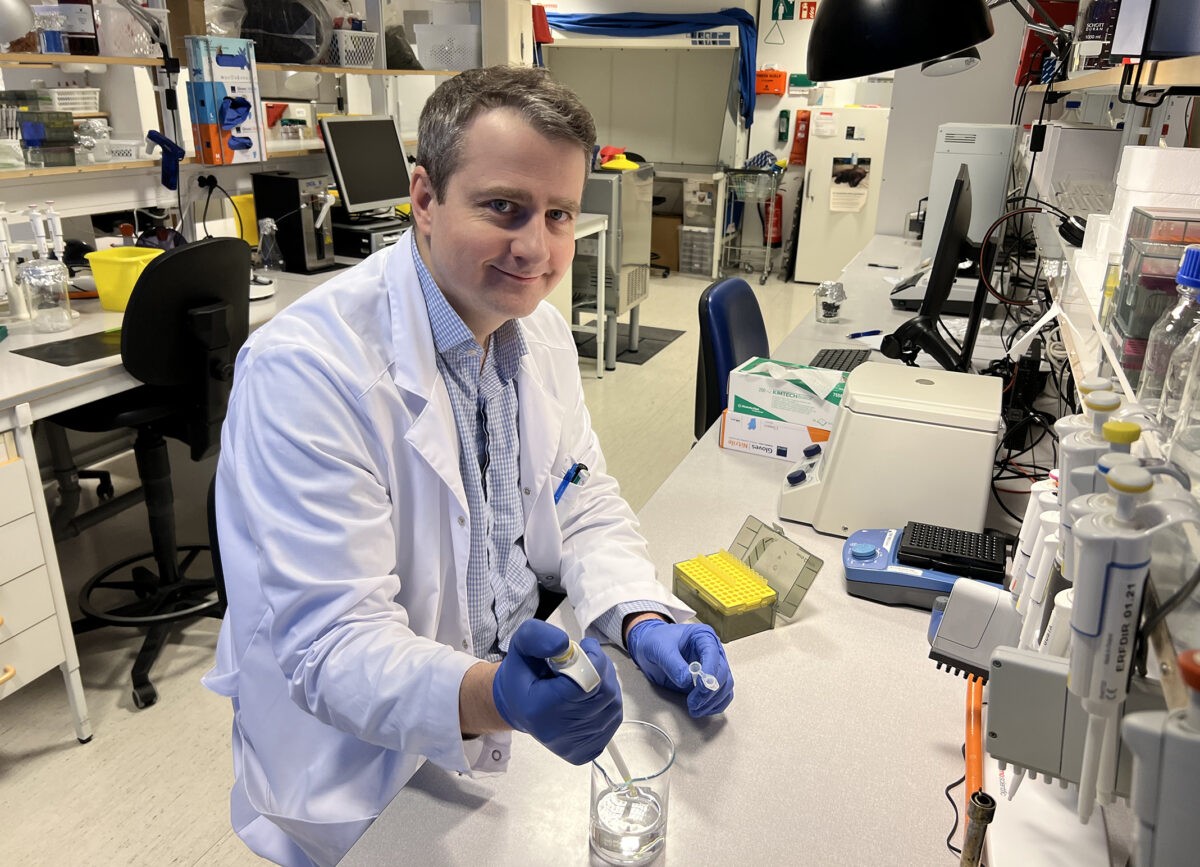
The genetics group at Matís carries out, among other things, genetic analysis and research on salmon, both farmed and wild. Sæmundur Sveinsson is the head of genetics and he has looked at the life cycle of the Icelandic salmon and its genetic diversity by water area, genetic analysis of salmon from sea hog farming and genetic analysis of salmon for so-called fish farming to name a few.
Icelandic salmon stocks
It is believed that wild Atlantic salmon have been in Iceland since the end of the last Ice Age, or for about 10,000 years. The life cycle of salmon has interesting consequences on the genetics of the species, but salmon spawn in fresh water, the fry live in rivers for 2-4 years and then go to sea. Adult, sexually mature salmon then return to the same river they grew up in after a year or two at sea, to spawn. A salmon that spends one year in the sea is called a small salmon, and a salmon that spends two years in the sea is called a large salmon. This behavior of the salmon, to seek out a nursery river for spawning, is partly determined by certain genes or genes. This life cycle means that populations in rivers are quickly genetically different from each other.
The life cycle of salmon and this genetic differentiation between populations means that the origin of salmon can be traced to rivers and lakes through genotyping. Salmon in Iceland is therefore extremely diverse and there is a great deal of genetic diversity within - and between water areas.
The Institute of Marine Research worked on research on the population genetics of Icelandic salmon, in collaboration with Matís, in the years 1990-2017, which showed precisely the great genetic differences between water areas and parts of the country. It is extremely important to preserve this diversity, but overall the genetic diversity of species is declining globally. In addition to this, salmon caught in the sea, mainly as bycatch from mackerel fisheries, were traced to rivers of origin. Those analyzes revealed that most of the salmon on Iceland's coast in summer turned out to be from continental Europe and Scandinavia.
Genetic diversity is essential to the existence of species and enables them to adapt to changes in the environment. These changes can be diverse, from changes in temperature or other environmental factors to new diseases. Global climate change will undoubtedly exaggerate fluctuations in the weather here in the Arctic, and therefore it has never been more important to preserve biological and genetic diversity in Iceland's biosphere.
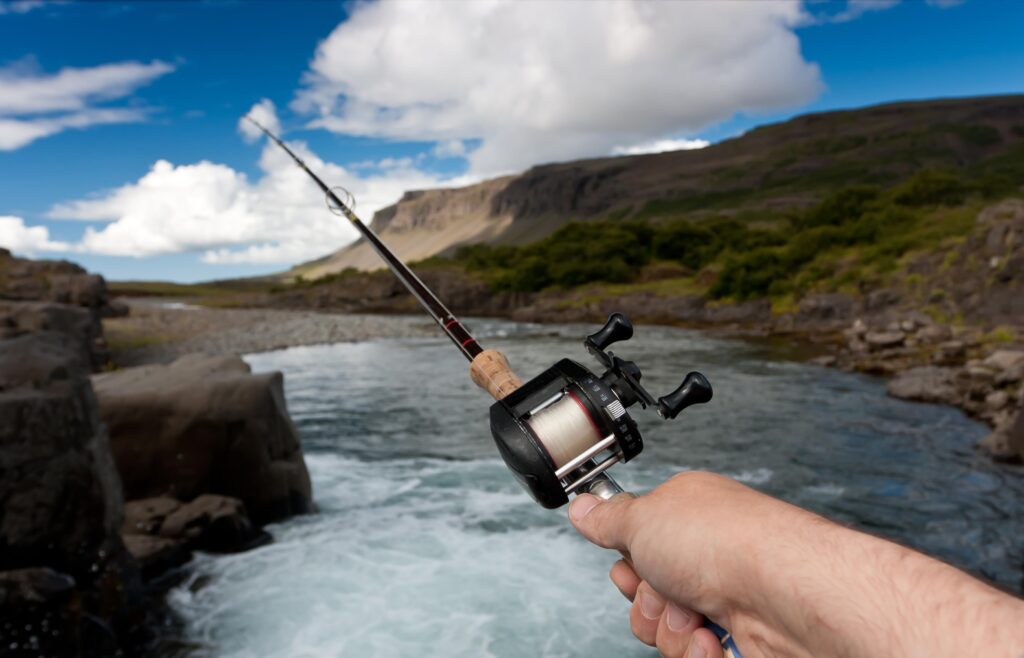
Brush salmon
For years, Matís has carried out genotyping analyzes of salmon. Streak salmon are fish that have escaped from sea pen farming and are then caught in rivers or the sea. Aquaculture inevitably involves the risk of farmed salmon escaping from the pens, but it is safe to say that no one wants this to happen and farm companies take various measures to prevent hatchery. In Iceland, a very efficient and good system is in place to keep track of the origin of salmon caught in rivers. It is a legal obligation to return all salmon that are caught to the Norwegian Fisheries Agency and/or the Norwegian Fisheries Agency. Matís receives a sample of the salmon for genotyping, which Hafró then uses to trace the origin of the fish, i.e. from which sea pen he escaped.
This system is based on the fact that Matís also genotypes all the broodstock used to produce fry in sea bream farming in this country. This data is used to perform paternity analyses, but all fish in a given pen have the same father, so their origin can be traced.
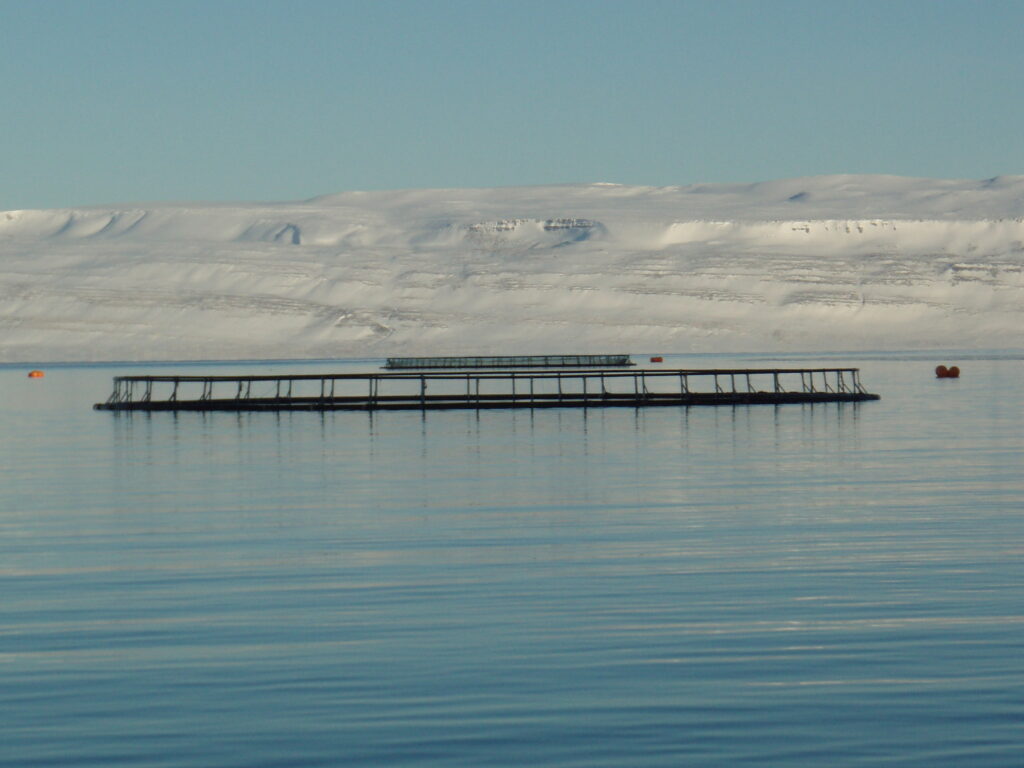
In August 2023, the Norwegian Food Agency, MAST, announced a large spill from a pen in Patreksfjörður. What was particularly serious about that streak was that most of the salmon caught turned out to be mature. That means the risk of serious genetic mixing is considerable. Matís received over 500 samples for analysis this fall.
Fish farming
In the fall of 2023, Matís began offering genotyping analyzes of salmon for fish farming. Fish farming refers to the raising of juveniles and juveniles and spawning from wild fish from the river in which the effort is being made to increase the number of fish and fishing. Matís' staff works very closely with the Norwegian Institute of Marine Research's experts in the organization's freshwater sector.
The Norwegian Fisheries Agency and Hafró agree that it would be very bad for salmon populations if farmed fish entered a hatchery and were used for fry or roe production. Salmon that have escaped early from a fire, i.e. when they were small, have very few visible signs of fire, and therefore it is not always possible to rely on the diagnosis of farmed salmon based on appearance. Genotyping is a powerful tool for identifying potential farmed salmon that could be included in fish farming. In autumn 2023, Matís carried out these analyzes for five fishing companies to ensure that only wild salmon would be used in fish farming.
A podcast about genetic analysis of salmon in Iceland
Sæmundur Sveinsson was an interviewer in Matvælinu, Matís' broadcast on research and innovation in food production these days. In the episode, he talks about genetic analyzes of salmon in Iceland over the years and especially the research that his professional group is currently working on. Sæmundi's song deals with these issues in an easy-to-understand and entertaining way, so it's safe to recommend listening!
The episode is available in its entirety on all major podcasts and in the player below:
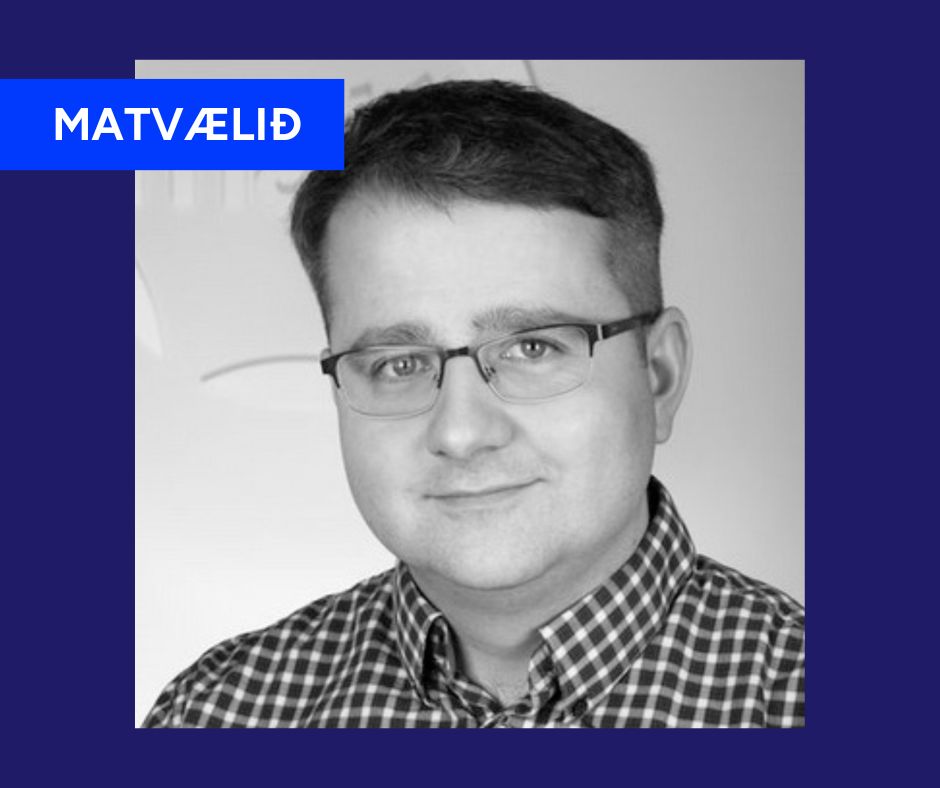
Sæmundur Sveinsson is genetics manager at Matís and in this episode of Matvælin he talks about salmon genetic analysis and projects related to it.
The Atlantic salmon is a remarkable organism and its life cycle has very interesting implications for the genetics of the species. The wild Icelandic salmon population is very different from farmed salmon, and it is extremely important to know the characteristics of these species well in order to be able to maintain diversity even though environmental conditions change, including global warming.
In the episode, Sæmundur discusses the life cycle of Icelandic salmon and its genetic diversity depending on the water area, genetic analysis of salmon from sea hog farming and genetic analysis of salmon for so-called fish farming, to name a few. Sæmundi's song deals with these issues in an easy-to-understand and fun way, so it's safe to recommend listening to everyone!
The episode is available in its entirety on all major podcasts and in the player below:
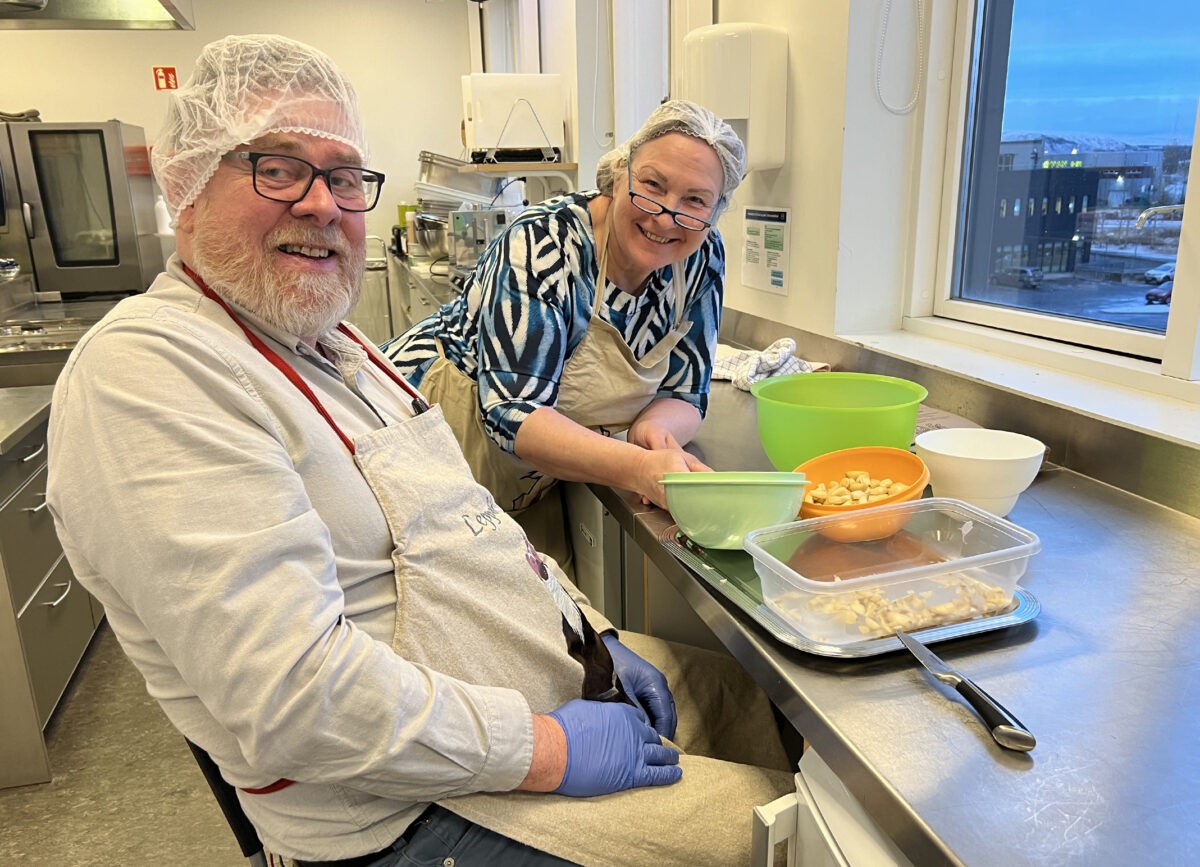
The production, sale and distribution of Dalahvítlauk's products is an example of a successful process where Matís' advice and facilities come into play. Here you can find information and advice that should be kept in mind when starting food production.
The husband and wife Þórunn Ólafsdóttir and Haraldur Guðjónsson started producing garlic in full force in the summer of 2023, but garlic cultivation begins with sowing seeds in autumn and harvesting in late summer the following year. Last summer was spent almost exclusively on growing seeds, so the first whole garlics are expected in stores in the fall of 2024. However, a by-product of the seed cultivation is the cloves of garlic, which are too small for seeds, and that's where this story begins.
The couple turned to Matís for their sake The food factory which operates at Matís in Reykjavík and believed that operations in a fully equipped food factory that is already in operation would be sufficient to start food production, packaging, sales and distribution. However, something else happened during the day. Cultivation and sale of whole garlic does not require special permits since it is primary production. If the onion is further processed, such as separating the ribs in the onion, peeling, cleaning or further processing, then it is considered food processing.
Food processing, by whatever name it is called, requires a license. You need to apply for a work permit from those who grant it. The local health authority or the Swedish Food Agency, depending on the nature of the activity. In this case, it was the Reykjavík Health Authority that had to grant the permit.
Since some time had passed since the garlic was taken up, it was starting to lose quality, and therefore needed a quick hand in obtaining a work permit.
The first step is to make a quality manual. A quality manual must state what is to be produced, from which raw materials, who produces, where and how the production takes place. Information on nutritional content and possible intolerances is also needed. It must be demonstrated that the person understands the rules that food manufacturers obey, the shelf life of the product must be explained, which packaging will be used and confirmation that it is intended for food must be obtained. Then you need to know the difference between personal hygiene and general handling of food, for example possible cross-contamination and how to prevent it, but this is done through risk analysis.
As soon as there was a request for Matís to provide advice on the preparation of a quality manual, we started. A day later, a usable quality manual was ready that could be presented to the health inspectorate, and it was also then possible to request a work permit. The license was obtained two days later, and then the production of garlic salt began, but it is the first product that came to the market from Dalahvítlauk, produced in Matís's Matirsmiðja at Vínlandsleið 12.
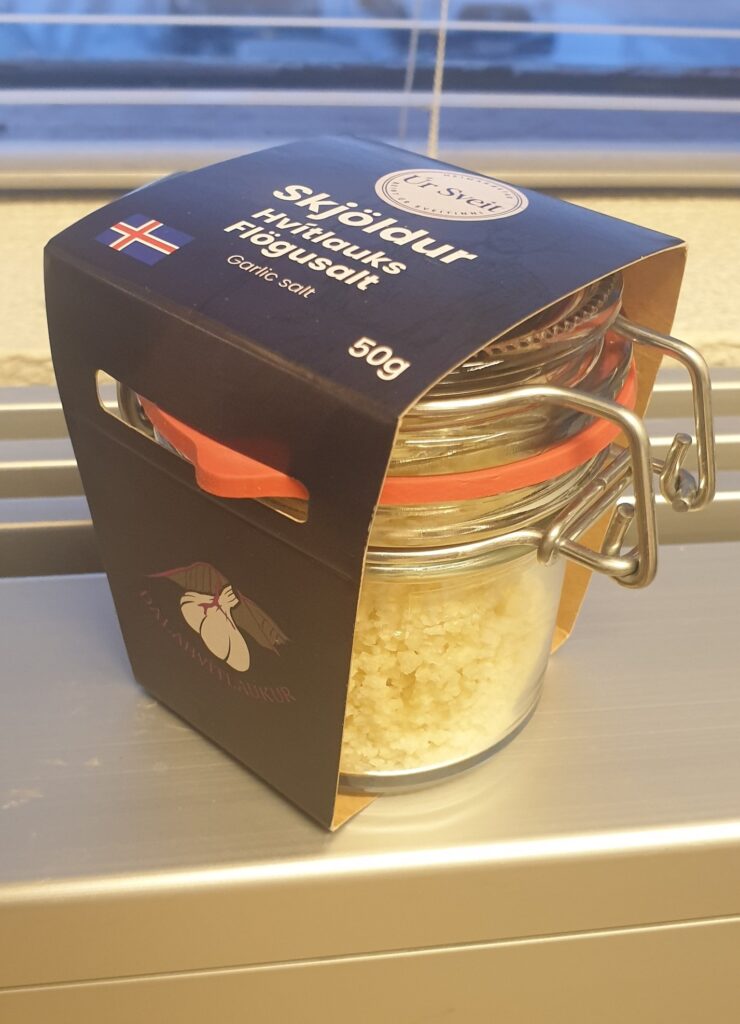
You can follow fun posts about the crops and products on Dalahvítlauk's Facebook page here: Valley garlic.
be in touch
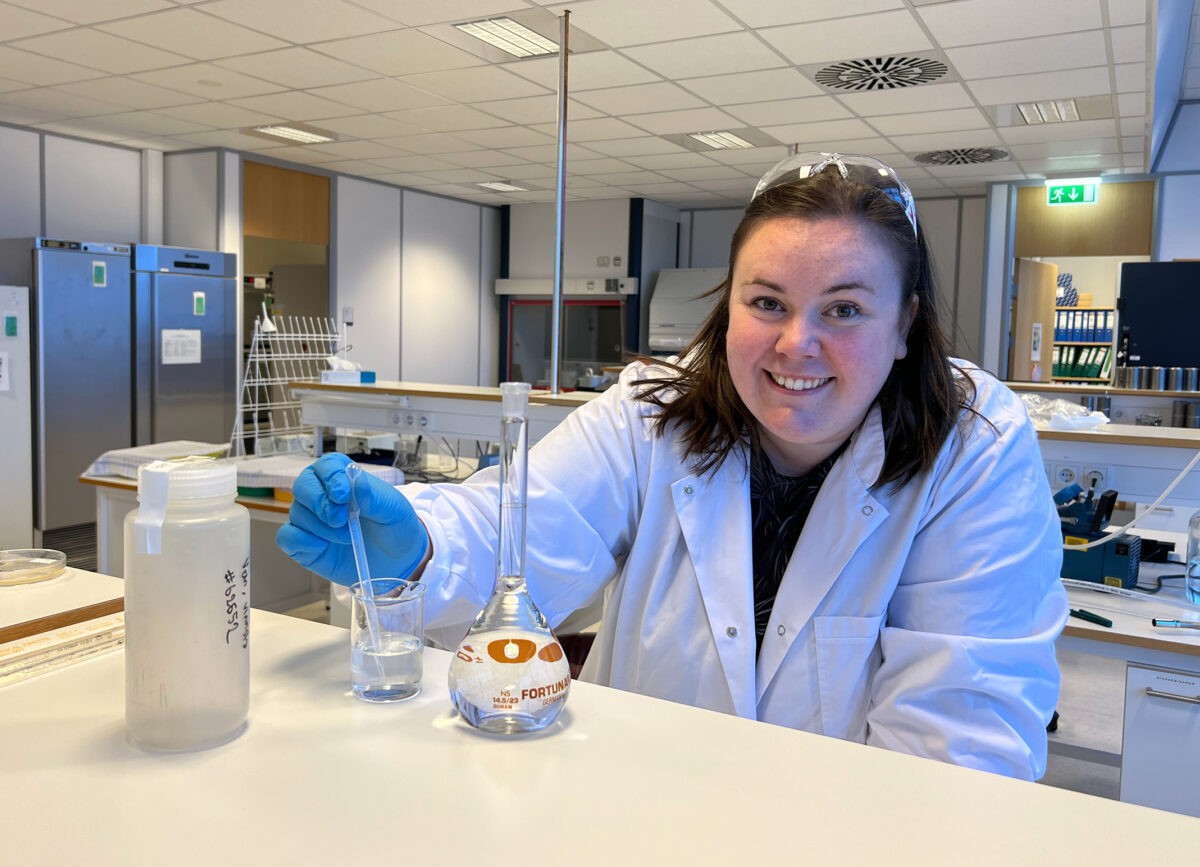
Iceland has long been at the forefront of the utilization of so-called secondary raw materials, and one of the raw materials that is interesting to evaluate both with an opportunity for value creation and environmental issues in mind is water from, for example, fish processing plants and land farms. The Accelwater project that Matís is currently working on is about finding solutions to make use of value from process water and the best use of water in the fishing industry and cooking.
Hildur Inga Sveinsdóttir manages the part of the work that Matís does in the project, but it is done in collaboration with 17 parties from five European countries with funding from the European Union through Horizon 2020. "We decided to participate in the project in collaboration with strong industrial partners in Iceland and aimed to use the work in order to assess the opportunities that exist in this field in this country". The project is led by the Greek technology company Agenso and involves many participants, both from industry and the research environment. In addition to Matís, the Icelandic participants in the project are the University of Iceland's Faculty of Food and Nutrition, Útgerðarfélag Akureyri and Samherji Fiskeldi.
But what are side ingredients?
It's really a question of word usage, but it's often talked about side currents or side ingredients. This refers to raw materials that you can get out of processing that are not the main product you are looking for. Fishing and processing is a good example, where fishing is done in order to obtain fish fillets for consumption, while side streams are other raw materials that may have previously been defined as waste or garbage. These can be for example heads, skins, guts or whatever, but when you handle these things right there are opportunities to get a lot of value out of them.
We try to use the word side ingredient because that way we indicate that this is an ingredient that we can use for something, not just "extra junk" that we need to get rid of. We emphasize to stop talking about this as waste or rubbish because it often evokes negative mental associations that give a wrong image of the raw material. For example, in recent years, a variety of valuable products have been developed from fish roe, which in the past would have been thought to be impossible.
Fresh water use in food processing and better utilization
The main goal of the project is to use value from water and reduce fresh water consumption during food processing. Foreign partners are working on experiments within the value chain in tomato growing, meat processing, the dairy industry and in brewing. In Hérland, emphasis is placed on land cultivation of whitefish and land farming of salmon. Emphasis has been placed on assessing the situation by analyzing the environmental impact and use, then which resources are used in these different processes, and then what possible opportunities exist for saving water and energy resources on the one hand, and on the other hand what possibilities there are for value creation from the main water streams.
The project is still ongoing and there is more than a year left of the planned work. The results that have been collected so far show that Icelanders generally use a lot of water during processing and there are opportunities to reduce that use, but the methods that are planned to be evaluated in the project are being developed and it will be exciting to see what they deliver. In addition, there are great opportunities in relation to the utilization of side streams from land farming, especially aquaculture sludge or aquaculture manure, which contains a large amount of valuable nutrients that can potentially be used to make fertilizers, for example. Experiments and analyzes of the opportunities that lie in that raw material are currently underway, along with an assessment of their safety.
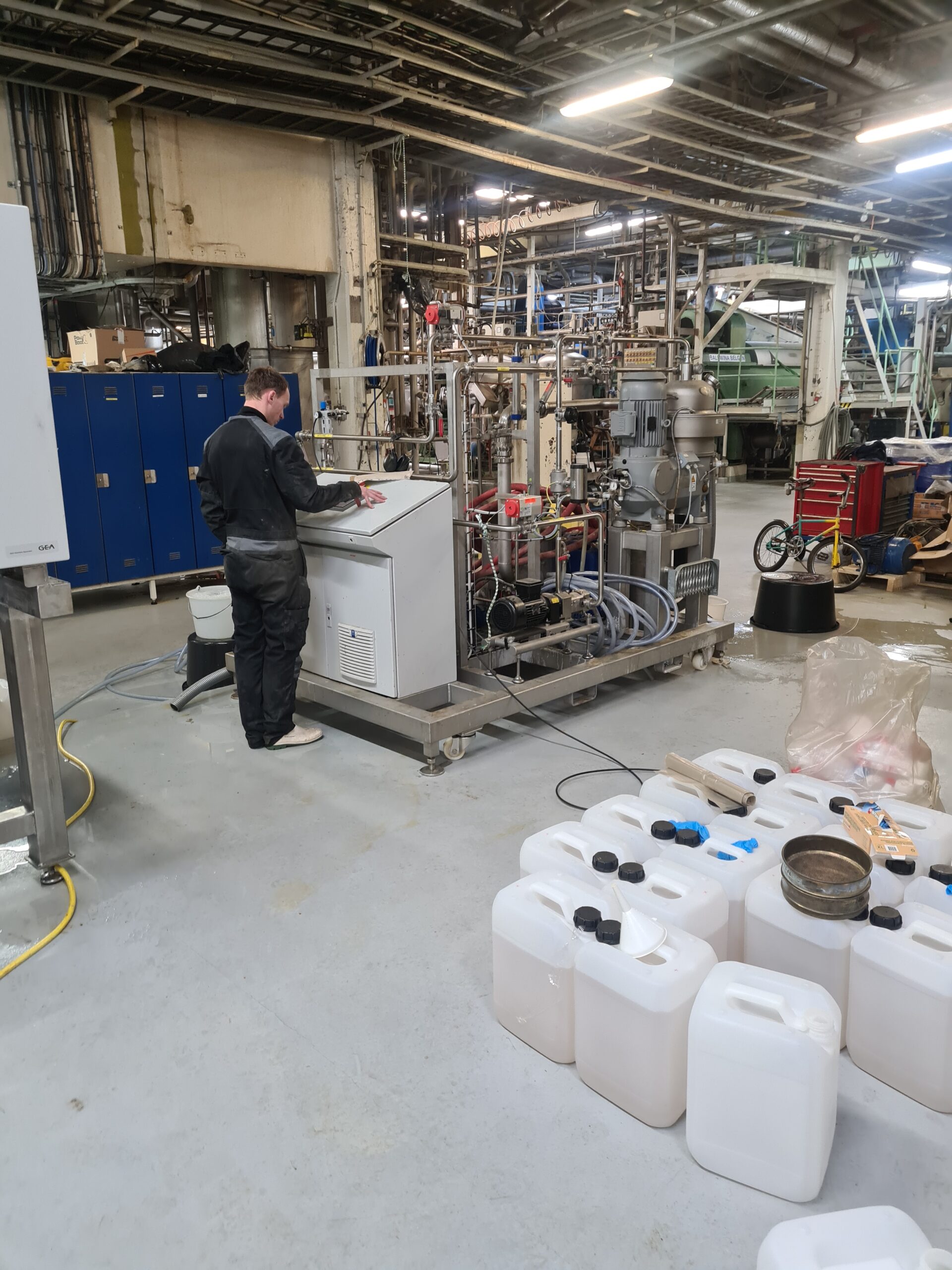
Water is a valuable resource
The discussion that has been created about the project keeps alive the important fact that we must not take it for granted that here in Iceland there is good access to the resource that is clean fresh water and we make sure to always use it as sparingly as possible. The project has also entered into an important discussion related to the development of rural agriculture in this country.
results The results of the project will be published in open scientific publications and presented to relevant stakeholders as appropriate so that they will be useful to other parties in the industry in Iceland and abroad. Results will also be useful for policy making and setting up and reviewing processes in fish processing and land farming, the latter of which is the fastest growing industry in Iceland today.
A podcast about Accelwater
Hildur Inga was an interviewee in Matvælin, Matís' podcast about research and innovation in food production these days. There she told about this interesting project and her passion for delivering the content of the Accelwater project clearly and surely shone through. The episode is both informative and refreshing, but it is available on all major podcast stations and in the player below.
Project page
Accelwater's progress can be followed on its project page here: AccelWater and on social media.


